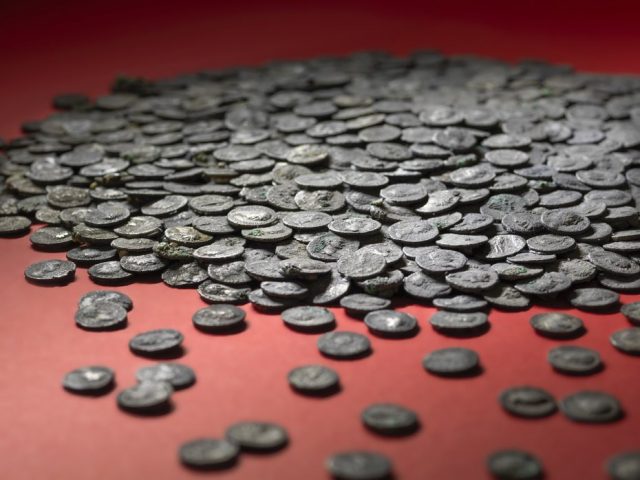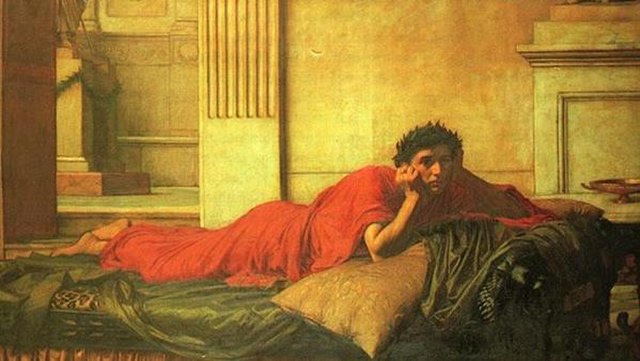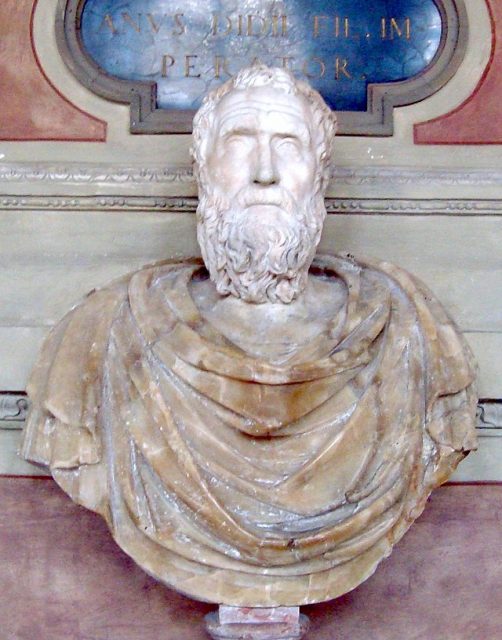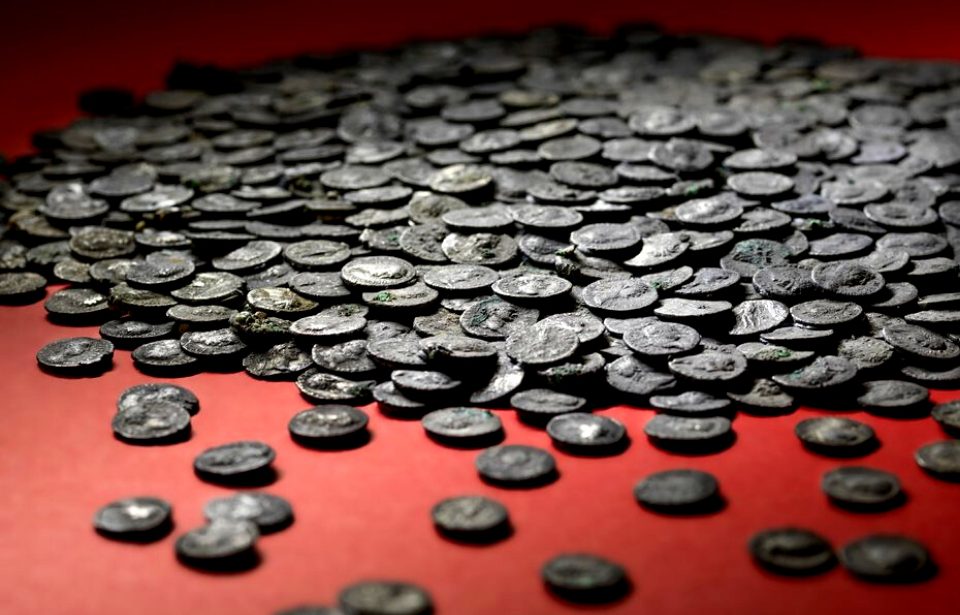A hoard of more than 5,500 silver coins dating back 1,800 years to the Roman era have been uncovered along a river in Augsburg, Germany. The coins are said to have originated during the reign of three high-profile emperors.

In an email to Live Science, Stefen Krmnicek, a professor of ancient numismatics, said the coins are made from “denarii, the standard silver denomination” during the 1st to the early-3rd century A.D.” The total weight of the find is approximately 33 pounds, making it the largest hoard of Roman silver ever discovered in Bavaria, Ancient Origins reports.
The coins were found earlier this year during the excavation of a site near what once was the earliest ancient Roman base in Bavaria. Sebastian Gairhos, director of the Archaeological Service of the City of Augsburg, said it’s likely they weren’t buried at the location at which they were found and likely moved along an old Wertach river during a flood event.

“We have just started cleaning and studying the material,” Krmnicek added in his email to Live Science. “The youngest coin of the hoard was minted at the beginning of the 3rd century [A.D.], thus dating the deposition of the hoard in the early 3rd century. We currently hypothesize that the hoard was buried in the 3rd century outside the Roman city of Augusta Vindelicum, near the Via Claudia Augusta [a Roman road] running there.”
The site, located approximately 40 miles northwest of Munich, started out as a Roman military camp built during the rule of Emperor Augustus between 8 and 5 B.C.E. It later grew into the town of Augusta Vindelicum, which then became the capital city of the Roman province of Raetia.
The oldest coins appear to have been minted during the reign of Emperor Nero (54 to 68 A.D.), and the most recent date back to Septimius Severus, who ruled from 193 to 211 A.D. There are also coins from the time of Didius Julianus, who was in power just two months before he was killed in 193 A.D.

“Augsburg’s rich history has now become even richer,” said Mayor Eva Weber in a statement. “Once again, the importance of Augsburg became abundantly clear as early as Roman times.”
At present, the archaeologists involved in the excavation are looking to solve the mystery as to why the coins were buried in the first place. “We do not know why the hoard was deposited,” said Krmnicek, adding that Leo Brey, a doctoral candidate from the University of Tübingen, has been tasked with uncovering the answer.

More from us: ”˜A Hugely Important Find:’ 1,400-Year-Old Gold Coin Hoard Discovered In England
The city of Augsburg is planning a temporary exhibition of the hoard, along with other discoveries from the ancient Roman era, between December 17, 2021 and January 9, 2022.
